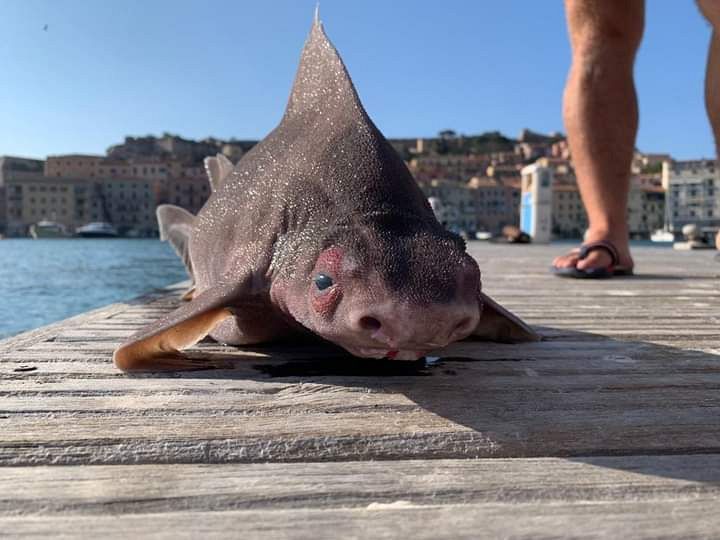
A fish with the body of a shark and the face of a pig may sound like something straight out of a science fiction movie. But that precisely describes the dead shark retrieved from the waters off Italy's Elba Island on August 15, 2021. Not surprisingly, photos of the unusual animal, posted on the Elba Island App Facebook page on September 3, 2021, have caused a stir worldwide. However, locals are not impressed.
Angular roughsharks, aka "pig fish," are common in the eastern Atlantic Ocean — from Norway to South Africa, including the entire Mediterranean Sea. The sharks, which feed on worms, crustaceans, and mollusks, can be found at depths of between 200 and 2,200 feet (60 to 670 meters). While most individuals grow to about 3.3 feet (1 meter) researchers have found ones as long as 4.9 feet (1.5 meters).

"This fish is quite frequent in our waters: it is commonly called "pig fish" because when it comes out of the water emits a kind of grunt," Yuri Tiberto, owner of the Elba Aquarium, told the Toscana Media News. "It's capture certainly cannot be said to be exceptional. In fact, in recent years, several other specimens have been caught."
The angular roughsharks' wide-set eyes, flat head, and large, pinkish snout are not their only unique features. They have many other attributes that are not common in other shark species. These include two massive pointed dorsal fins, rough scales, or denticles, on the skin, and prominent ridges over the eyes.

The pig fish is not the only unusual shark recently found in the Mediterranean Sea. In July 2019, fishers pulled up a "naked" shark — one that seemed to be born with no skin or teeth. The one-of-a-kind fish had managed to survive for three years before it died in the fishers' net.
Resources: Livescience.com, wild-facts.com, natureworldnews.com
